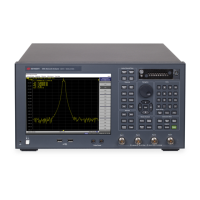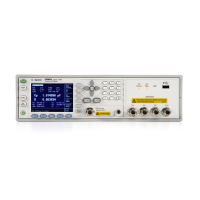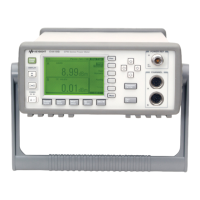E5071C
52
• To manipulate a menu bar, it has to be selected as the object to
manipulate (with the focus placed on it). When the focus is
placed on a menu bar, the menu title area at the top is
displayed in blue. Pressing or clicking on Focus Key in the
ENTRY Block enables you to move the focus to the desired
object.

